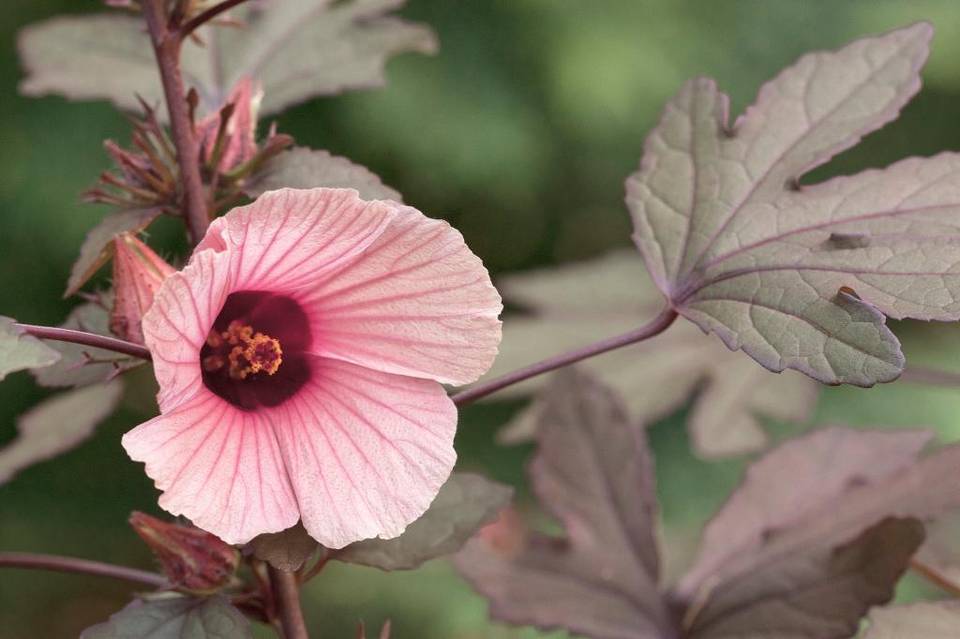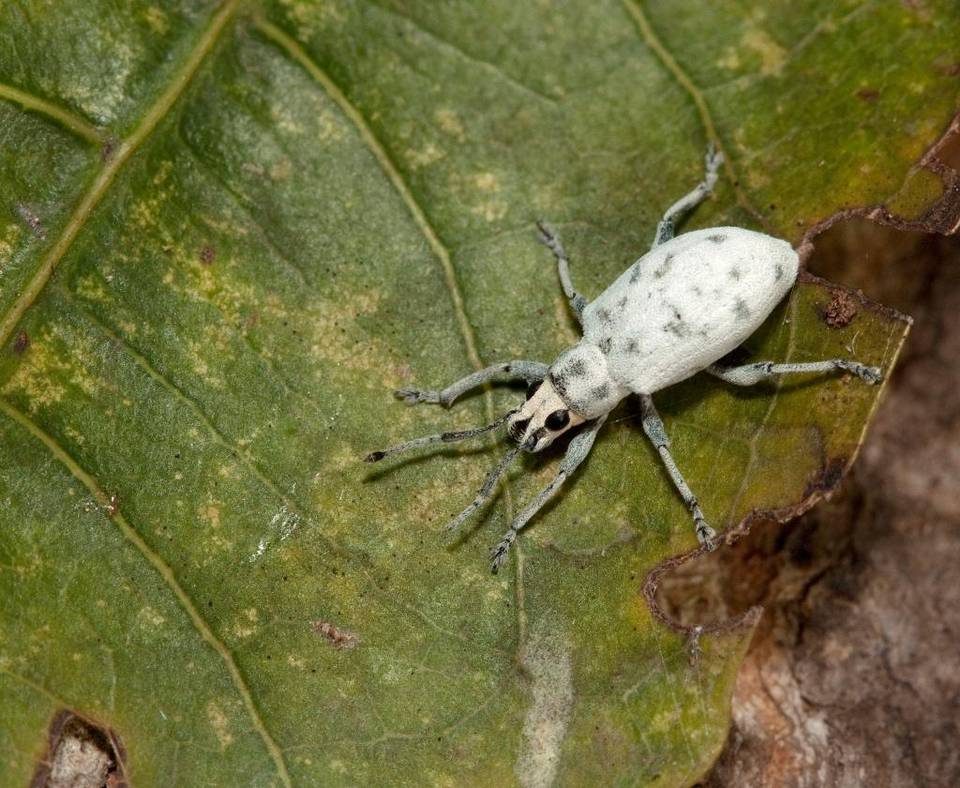Cranberry hibiscus

BY KENNETH SETZER
As published in the Miami Herald, 12/9/15.
Cranberry hibiscus possesses a rare combination of beauty, utility and edibility. Once established, this tropical hibiscus requires little to no tending or irrigation, is a landscaping standout, and is edible.

Cranberry hibiscus is grown in Fairchild’s Edible Garden exhibit to show what edibles can flourish in South Florida. Among the expected greens of the ground-hugging herbs, spreading katuk and soaring papaya, this hibiscus pops out with a bit of unexpected maroon in its flowers while seeming to mimic Japanese maple with its coppery red foliage.
But there is some confusion, which is not surprising when you consider the hundreds of hibiscus varieties. One plant often called cranberry hibiscus is indeed similar looking, but with green foliage. It’s also known as roselle or Florida cranberry; more accurately it is Hibiscus sabdariffa.
This is the plant used to make the piquant and refreshing Jamaican drink sorrel — also not to be confused with the leafy green vegetable sorrel (Rumex acetosa). Roselle is also the source of hibiscus herbal tea. The calyx — the cup-like structure supporting the bottom of the flower — is the part utilized for tea.
The cranberry hibiscus at Fairchild (and in my own yard) is Hibiscus acetosella, aka false roselle. Its young leaves are cooked and eaten, imparting an acidic flavor to other foods. A native of tropical Africa, H. acetosella is tough. Only a couple weeks after planting seeds in a clear plastic shell (a reused tomato container), I had seedlings a couple inches tall. The potting mix was my own compost mixed with a hefty amount of perlite to facilitate drainage and avoid the dense clumping of soil so detrimental to young roots.
Soon thereafter, they needed pots of their own to call home; even then, their fast growth meant I couldn’t keep up with watering, and they drooped. So into the ground they went! They grow on my west-facing front yard where there is lots of direct midday and afternoon sun. After I watered them for a week or so, they established roots enough to take in water on their own and have received no supplemental irrigation since.
Topping out at about five to six feet tall, two or three cranberry hibiscus can be planted closely together to form a bush. Just a couple grouped together make a standout statement in red. They can get tall and straggly, so pinch back the tallest stems to encourage a denser, bushier growth habit. Don’t hesitate to trim tall, lanky stems before they droop under their own weight.
Many hibiscus varieties are plagued by mealybugs, aphids, whiteflies, thrips and root nematodes. Indeed, a different hibiscus near my cranberry is in sad shape, with new foliage growing curled and distorted, a sign of aphids. It also shows chlorotic spots on the leaves, a sign of mealybug activity. Weeding and removing nearby foliage will increase air circulation, possibly also reducing the mealybugs.

Sri Lanka weevil, a potential Hibiscus pest
The indiscriminate eater Sri Lanka Weevil (Myllocerus undatus) may feed on hibiscus leaves as an adult; its larvae may attack the roots. Adults prefer new foliage, so don’t over fertilize, which stimulates lots of fresh growth.
Cranberry hibiscus is noted as being resistant to root-knot nematodes, and I must admit the plants are so far unfazed. I have noticed yellow aphids on many flower buds, but still, the cranberry hibiscus seems to be weathering the storm unaffected.
It’s a low impact, sustainable plant with no irrigation or fertilizer required once established. And the reddish foliage helps us feel it’s actually fall. Cranberry hibiscus flowers profusely in late fall into winter in our subtropical zone. But once it starts flowering, I bet you won’t have the heart to eat it.
